With the rapid development of wireless communication networks, it brings more and more convenience to users. However, with the expansion of network size, the limitation of channel resources in network communication is becoming more obvious. Effective channel assignment has a great impact on the quality of communication networks. However, in real communication networks, underutilization of channels and excessive number of channels produce large interference, so it is necessary to find a reasonable channel assignment method. In this paper, we study the optimal channel assignment strategy for the Cartesian product of an
In the era of rapid development of Internet, wireless communication has become an indispensable part of communication network. However, with the increasing number of users, the scale of the network has also expanded, which makes the limitations of the network become more obvious. With the rapid development of wireless communication networks in recent years, it has changed the way people communicate. But wireless communication network still has many limitations, the limited channel resources influence the fairy tale quality of communication network. Although many scholars continue to optimize the channel assignment algorithm to solve the insufficient utilization of channel resources in wireless communication networks, as well as the influence of inter-channel interference on the quality of communication. In 2024, Shin and Lee et al. [17] proposed an approximate algorithm to improve the performance of multi-radio and multi-channel wireless mesh networks based on theoretical model drive. Skalli, Ghosh et al. [18] put forward the problem and solution of channel allocation strategy for multi-channel wireless networks.
The optimal channel assignment strategy for wireless communication networks has attracted the research interest of many scholars. Griggs [5] proposed in the 2-distance label that the geographical location between sites will affect the degree of interference, and strong interference will be generated when two sites are close to each other, so that the distance between two adjacent vertices is at least 2. In fact, in 2001, Chartrand and Erwin [3] proposed the definition of radio label. Radio label is also known as multi-level distance label, which is a mapping function. In order to assign each endpoint of the graph to different vertex labels, the edge between any two adjacent vertices has the minimum weight. Moreover, each vertex is assigned a unique label. The mapping function of the radio label is as follows:
The construction of large-scale network in wireless communication
network is a complicated and tedious work. When using graph to simulate
the topology structure of large-scale network, according to the
knowledge of graph theory, product graph can be used to simulate the
topology structure of large-scale network. Let graph
Sabidussi [16] proposed the
concept of Cartesian product and several other products for the first
time. Let
When the properties of two graphs formed by a Cartesian product change, it becomes difficult to analyze the topology of the product graph, but its properties are relatively easy to analyze for special graphs, so the radio number of the product graph of some special graphs has been determined, such as Yenoke and Selvagopal et al. [22] have determined the boundary of the radio number of the enhanced mesh; Yenoke and Kaabar [21] studied the self-named nanostar tree dendrimers, and mainly obtained the distance 2 label and radio number of the nanostar tree dendrimers. Rajan and Yenoke [14] studied hexagonal mesh and obtained the span of its radio labels. Morris-Rivera and Tomova [12] studied the radio number of the cycle itself and its Cartesian product on the basis of the radio number of the cycle; ELrokh, Al-Shamiri [4] studied the radio numbers of graphs such as paths, cycles, stars and double stars, and obtained a novel radio label of graphs, and the upper limit of its radio geometric mean was obtained by a new algorithm. Arputha Jose and Daniel Raj [1] found the span of quadrilateral snake families through the vertex labeling problem of the graph; Khennoufa and Togni [9] determined the number of radios for the hypercube; Radio numbers for other graphs have also been derived, such as cactus graphs, splitting graphs, and certain sunflower extended graphs etc, see [8,2,7,10,11,23,19,13].
It is a challenging problem to find the optimal channel assignment
strategy by simulating the wireless communication network by the graph
and using the vertex labeling problem of the product and graph to assign
channels to the large network. Therefore, the channel assignment problem
of communication network is studied by using the Cartesian product. This
paper focuses on the lower bound of the radio number of the Cartesian
product of a complete bipartite graph
Proof. The diameter of
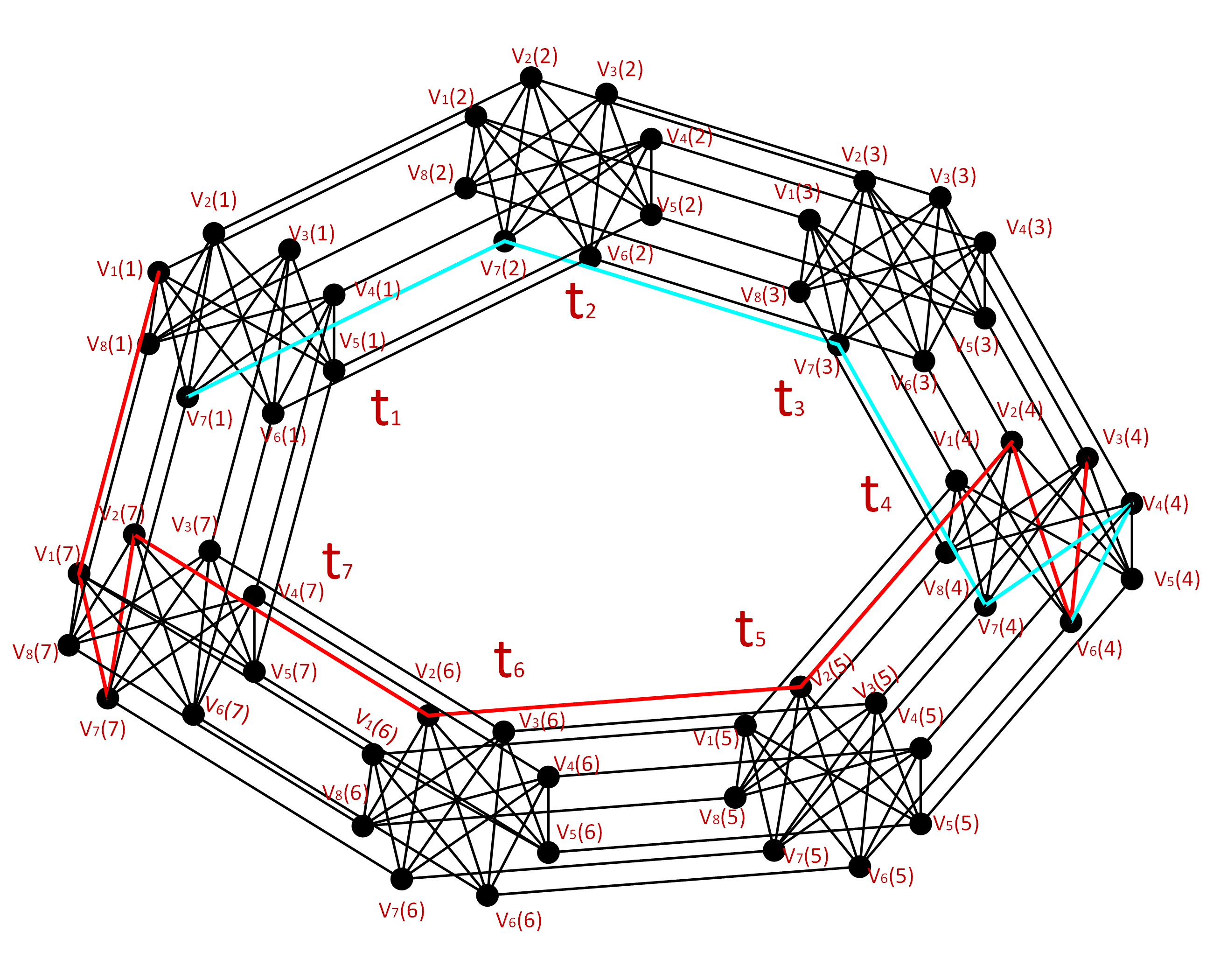
Proof. Let
Case 1: For
According to the definition of radio labeling and Eq. (5), we can get
Similarly, by the topology of the
Case 2(a): For
Similarly, by the topological structure of
Case 2(b): For
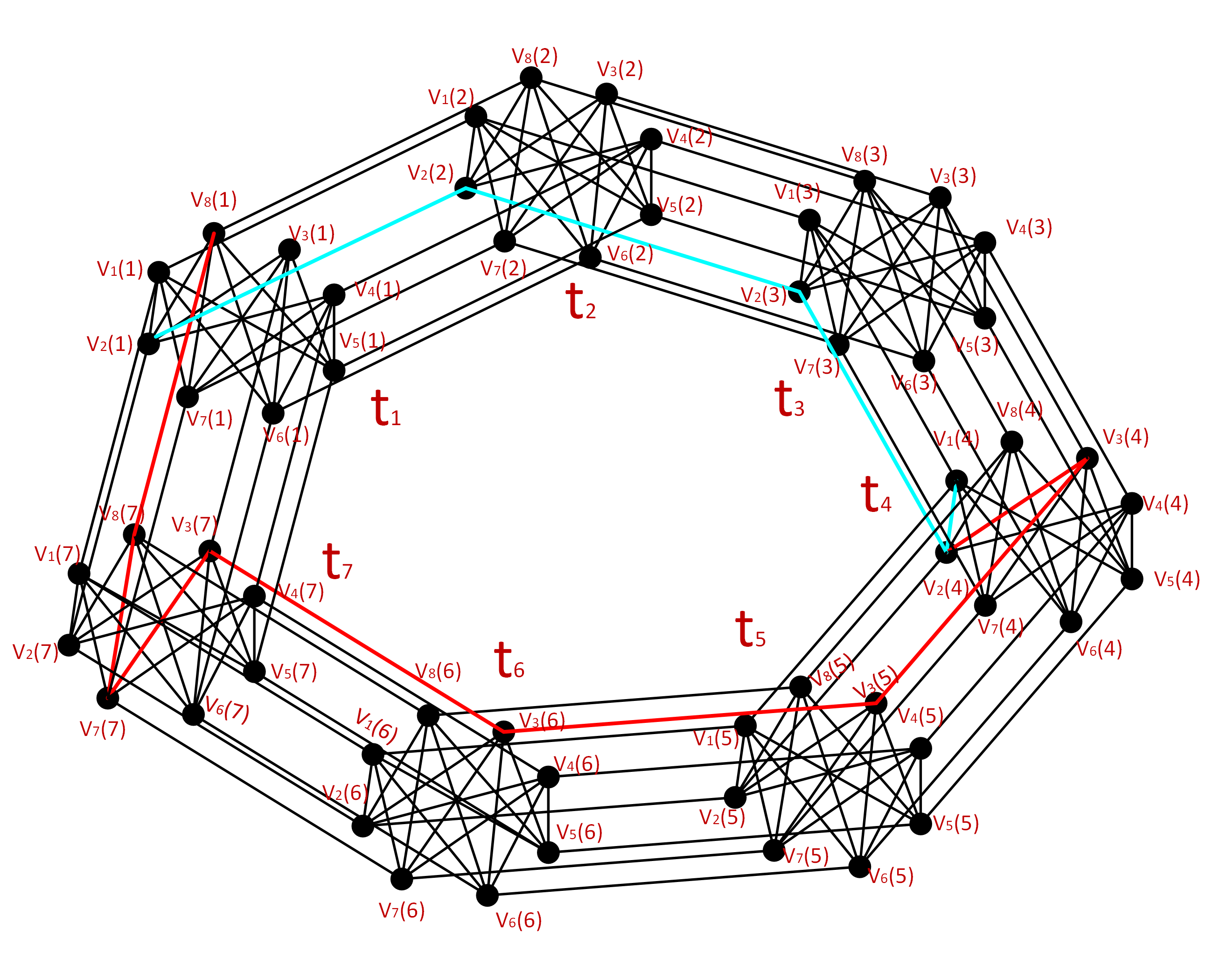
Similarly, by the topological of
Case 3: For
Also, according to the definition of a complete bipartite graph,
Proof. From the result of Theorem 2.6 we can get
that the span of radio labels in Case 1 is
The number of radios in the Case 2(a) and Case 2(b) is
According to Case 3, the sum of the radio labels can be obtained as
Without loss of generality, the span of all vertices of
Proof. Let the central vertices all lie in part a of the
complete bipartite graph, and let the vertices
Therefore, the radio number of
Proof. Let the central vertices be in the a part of the
complete bipartite graph, and let the vertices
When
When
When
When
When
Finally, the radio number
An important result of this paper is given below, which is the lower
bound of the radio number of the Cartesian product graph of a complete
bipartite graph with
Proof. By the Theorem 2.6 and Theorem
2.9, we can obtain
Then, according to the definition of radio labeling and Eq. (26)
it follows that
For
In wireless communication networks, radio antennas use radio labels in different bands of the spectrum to switch signals so that each station is assigned a unique number. However, the problem of limited resources and insufficient utilization in network communication leads to signal transmission interference. Many scholars solve this problem by optimizing algorithms constantly to reduce the interference in the communication process as much as possible. There are also many people using machine learning methods, neural networks and other advanced technologies to achieve the optimization of channel assignment.
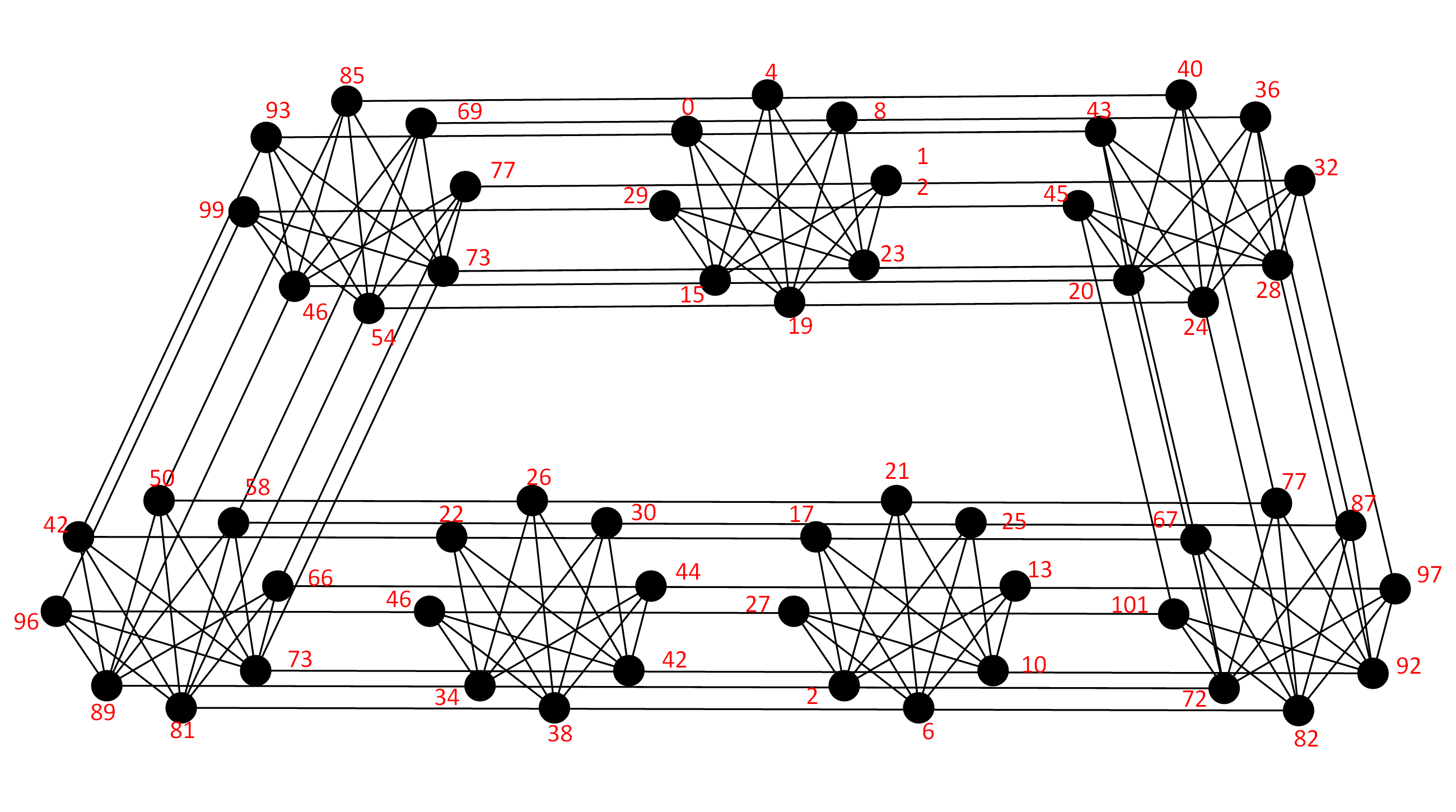
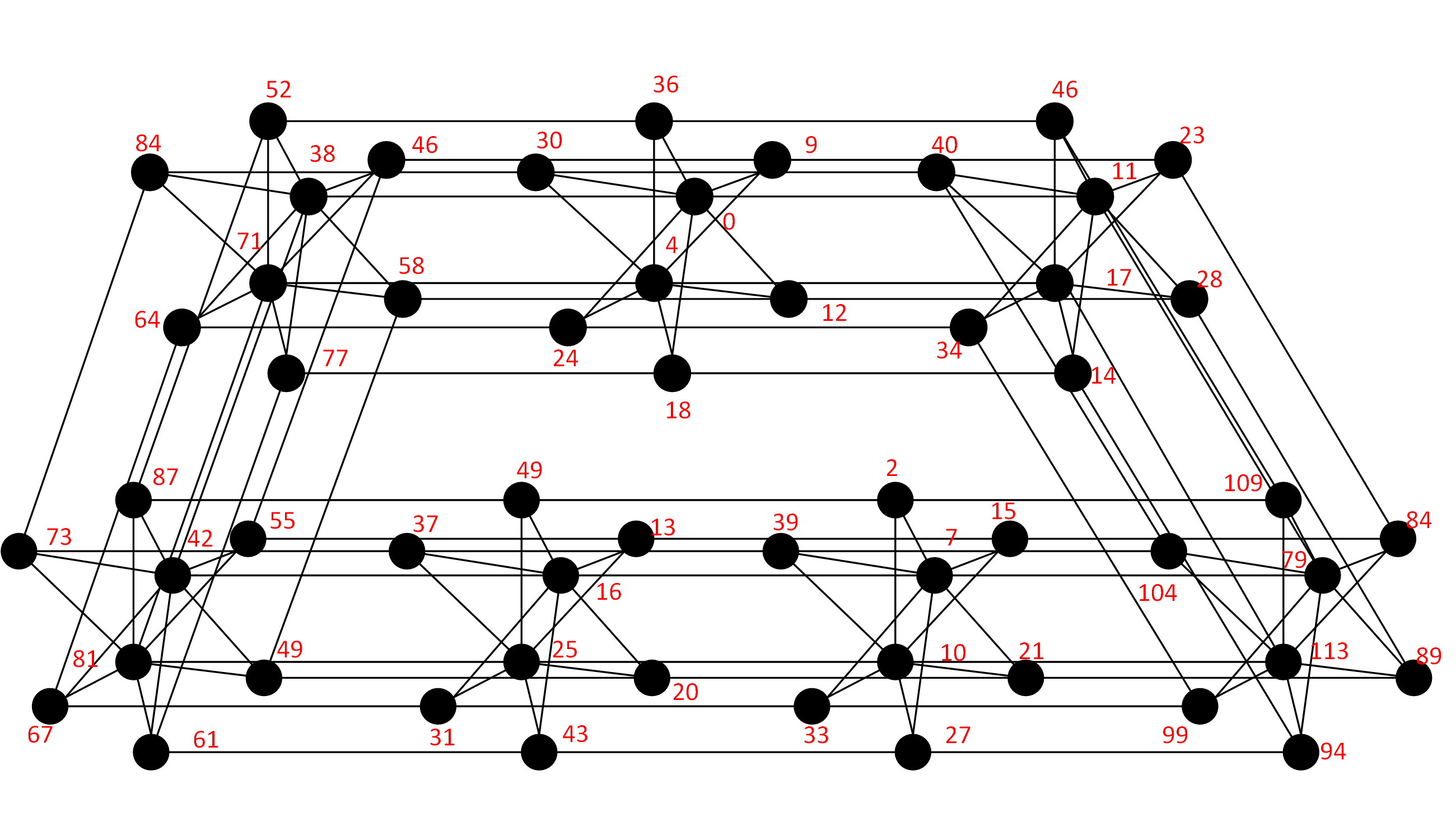
According to the above two examples, we can clearly see that when the city adopts the same topology structure for channel assignment, the channel assignment strategy is different when the number of stations in the two areas is different. When the number of stations in part a is larger, the channel assignment will use smaller channels; conversely, when the number of channel stations in area a is smaller, the channel allocation strategy will be different. The more the number of channels used for channel assignment. Therefore, in the case of limited channel resources, as far as possible to reduce the use of channels, we can increase the number of sites in part a and reduce the number of sites in part b, so as to achieve the lowest interference, so as to achieve signal transmission quality and improve network performance. According to simulation Figures 5 and 6, it can be seen that the more stations in region a, the less channel assignment. Although the difference between the two is not too large, the less channel usage in the process of network communication can not only reduce the cost but also reduce the interference.
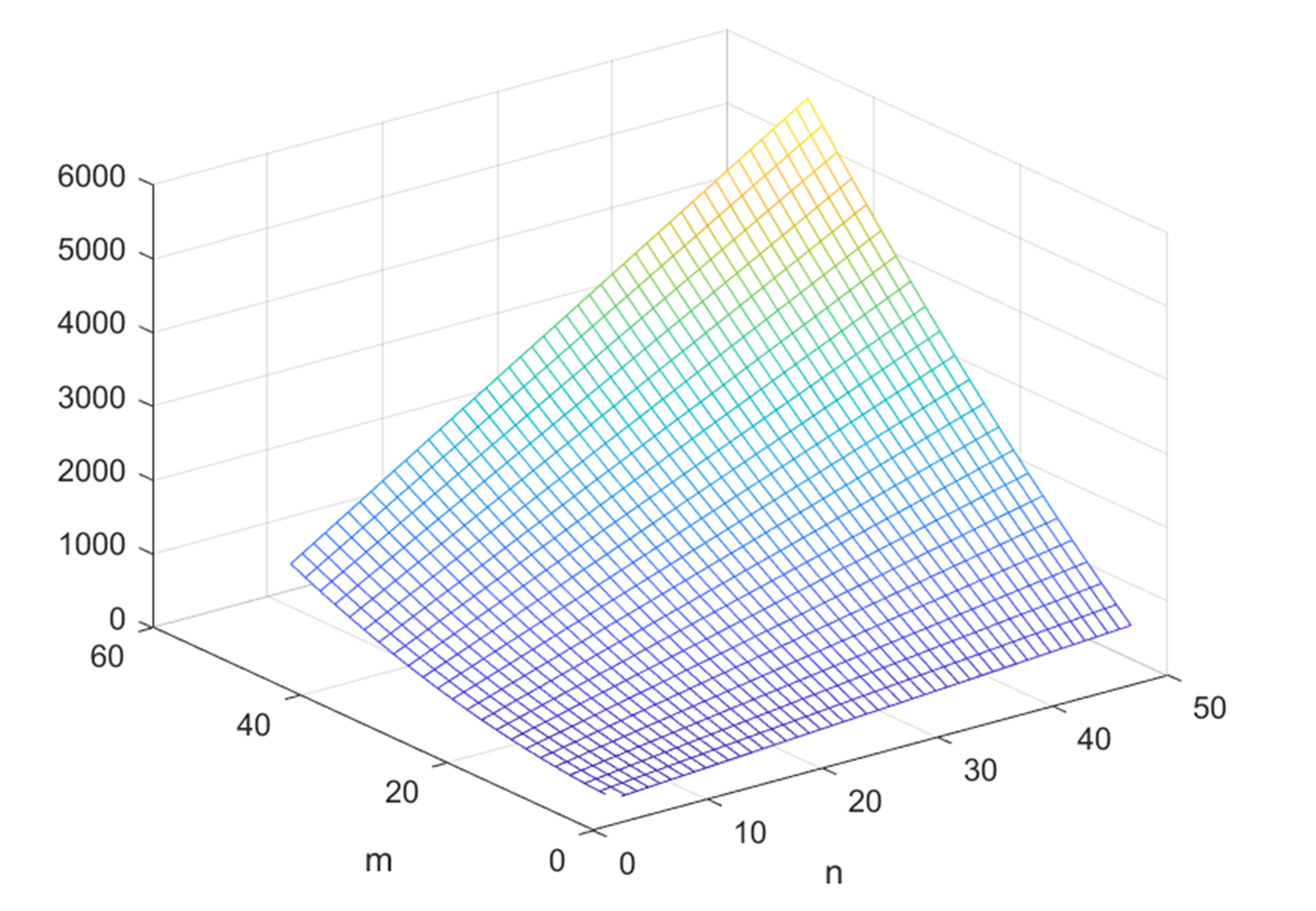
Channel interference refers to the mutual interference between different channels due to the overlap in frequency or time, which will reduce the performance of the network and affect the quality and efficiency of communication. In order to reduce the influence of channel interference, a variety of technical means can be adopted. For example, a channel assignment policy can be used to assign different channels to different users and avoid interference between channels. In addition, interference cancellation technology can also be used to eliminate or reduce channel interference through specific algorithms. In practical application, the influence of channel interference on network can be evaluated by network simulation and test. For example, network simulation software can be used to simulate channel interference and evaluate network performance under different interference conditions. In addition, field tests can be conducted to assess the impact of channel interference on the actual network and optimize the network design based on the test results.
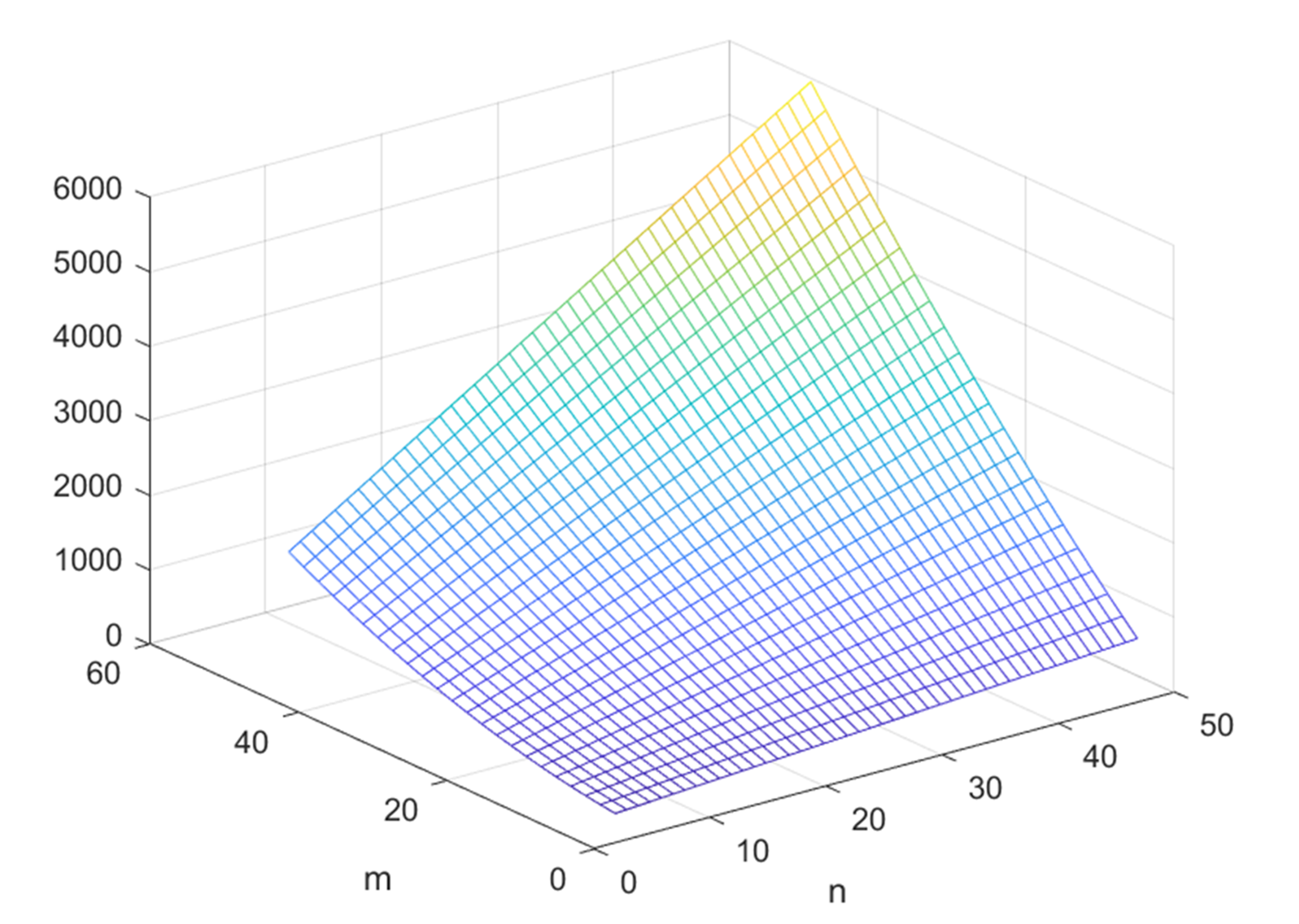
In this paper, we mainly determine the lower bounds of the radio
number of Cartesian products of complete bipartite graphs and odd
cycles, where
This work was supported in part by the National Natural Science Foundation of China under Grant 11551002, in part by the Natural Science Foundation of Qinghai Province under Grant 2019-ZJ-7093; Qinghai normal university in 2024 college students’ innovation and industry training program funded project (qhnucxcy2024021).
The authors declare no conflict of interest.
1970-2025 CP (Manitoba, Canada) unless otherwise stated.